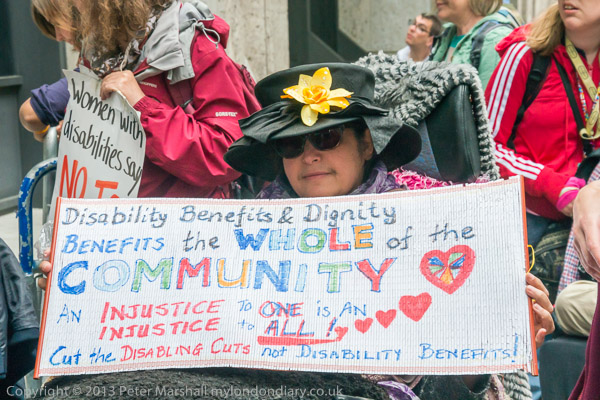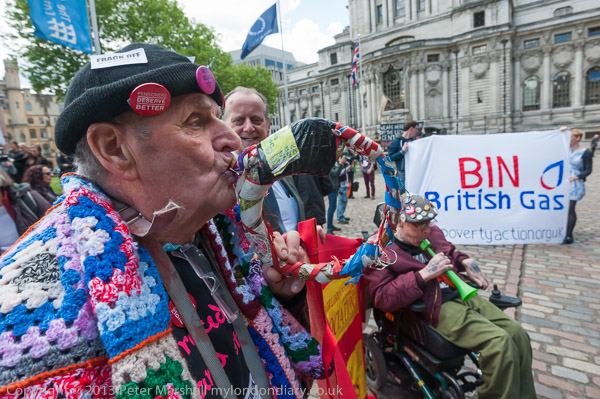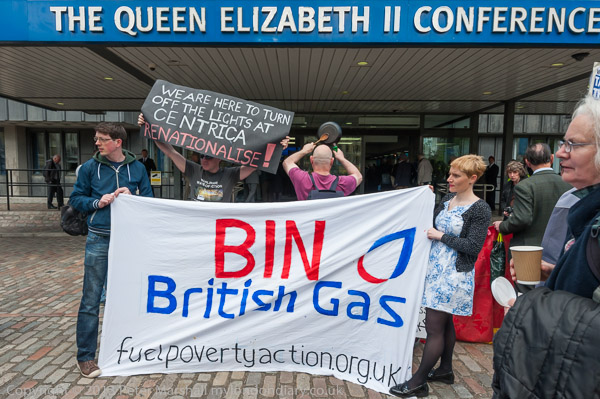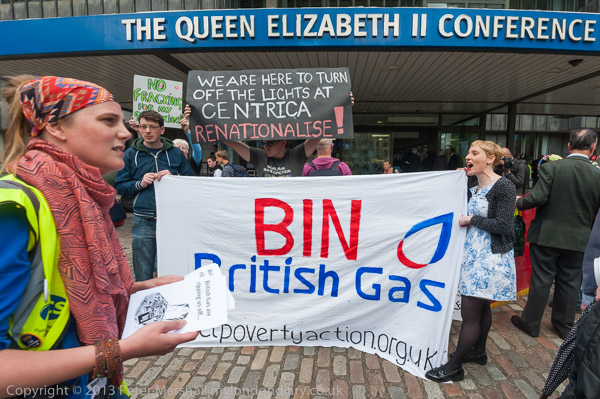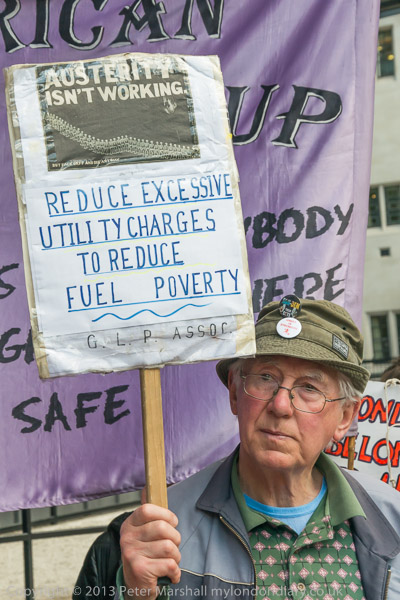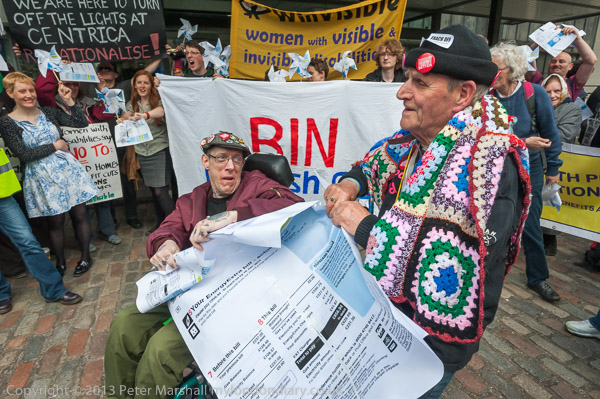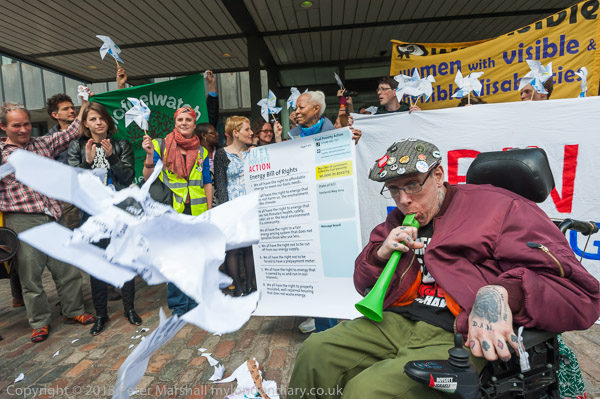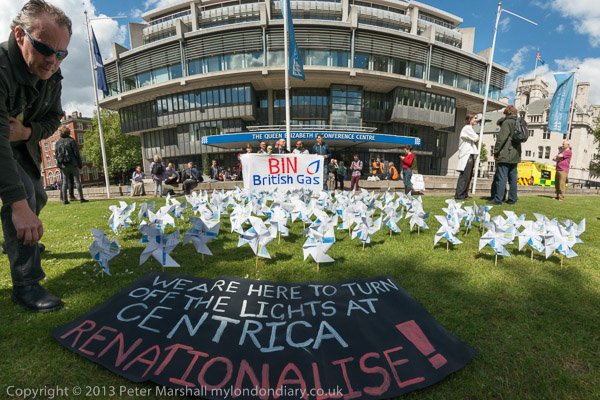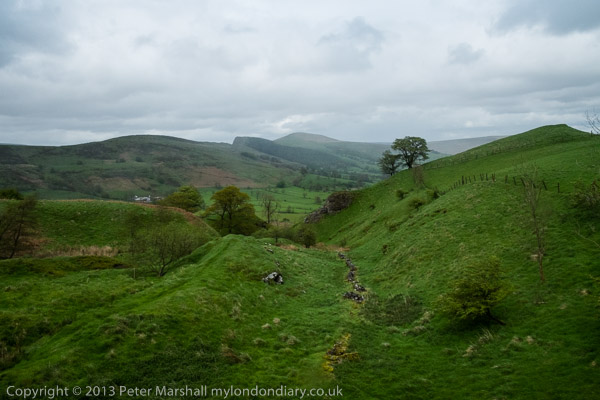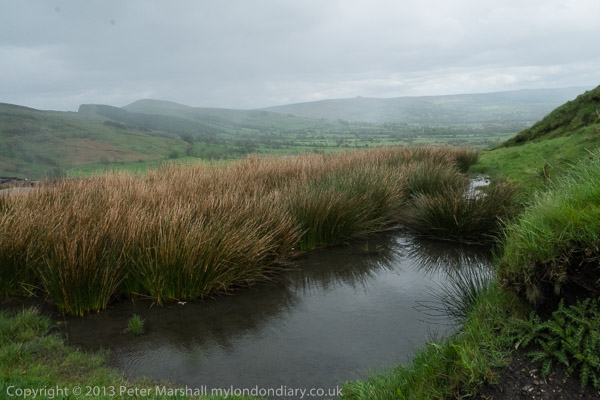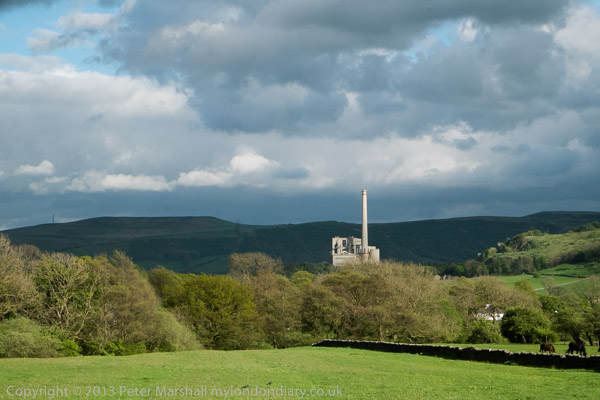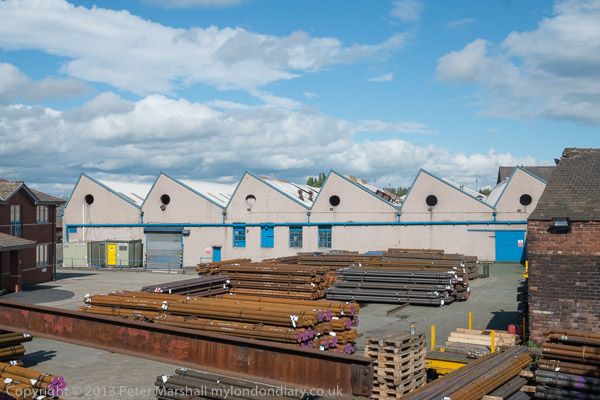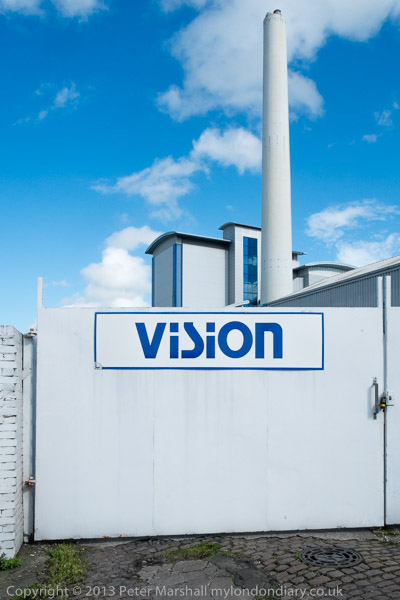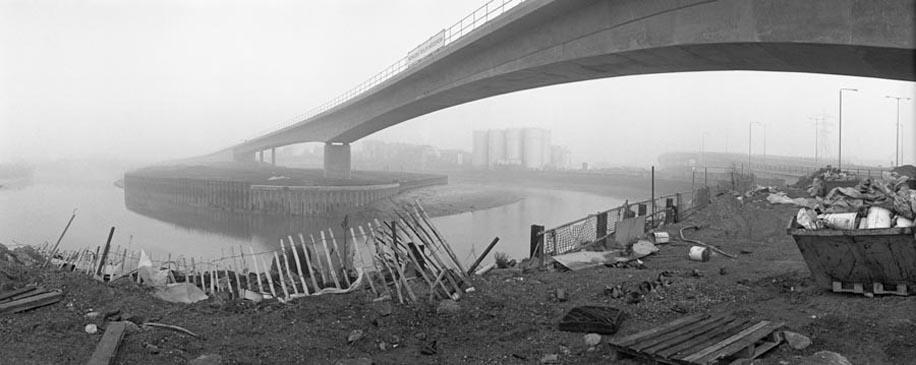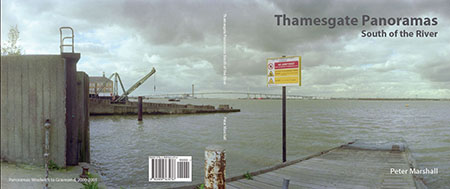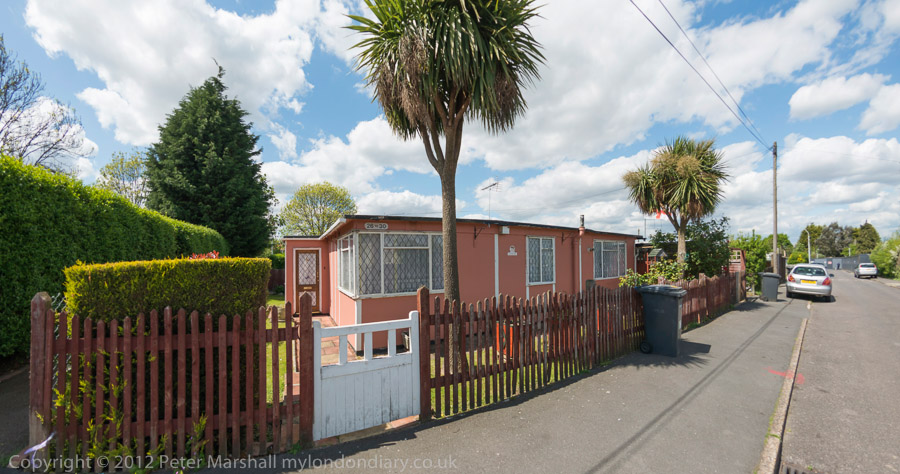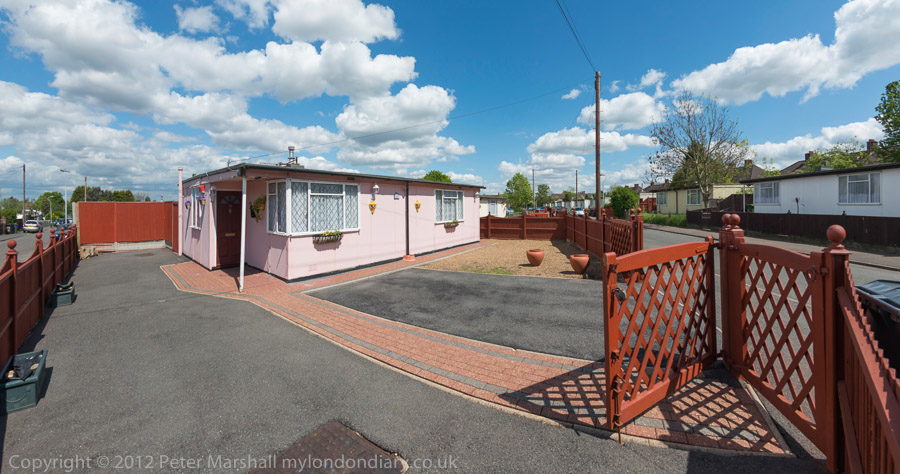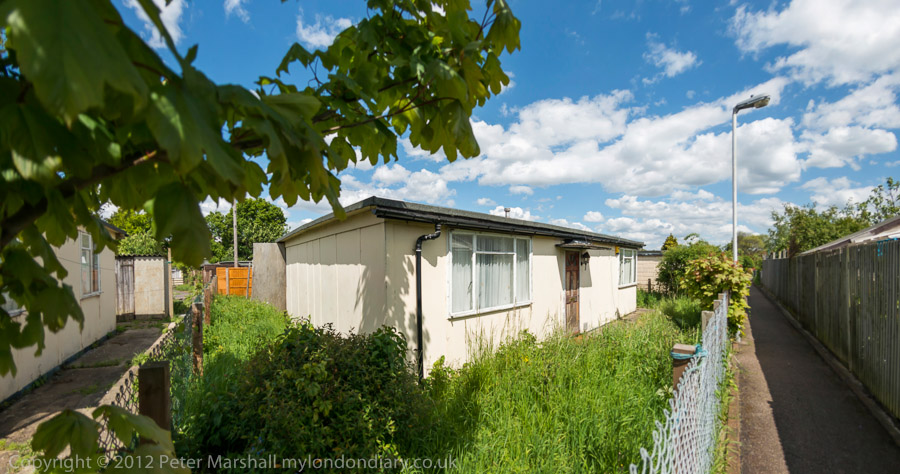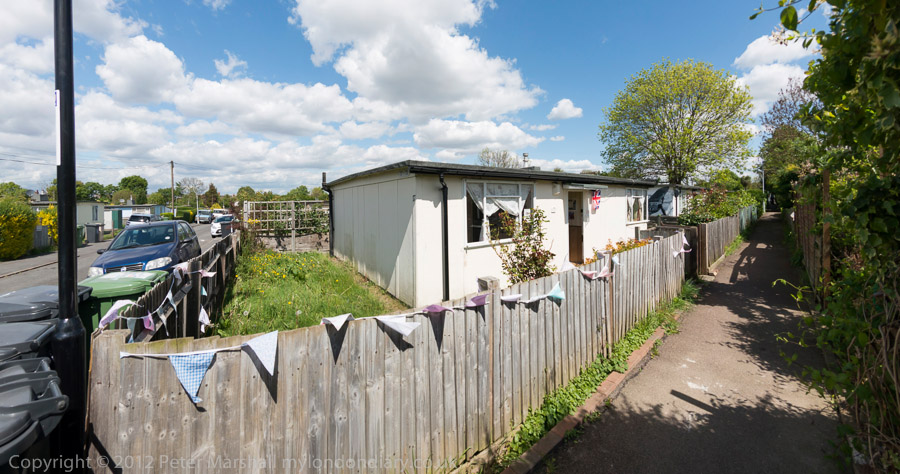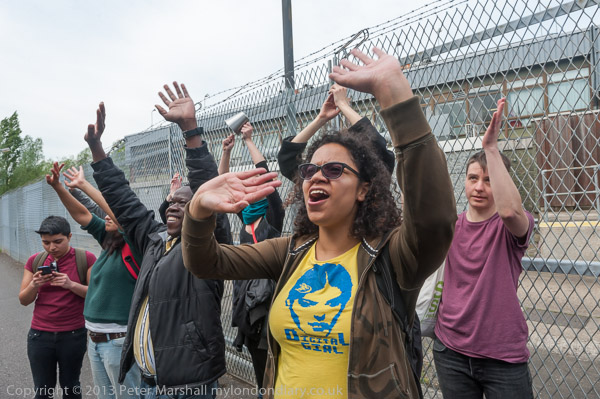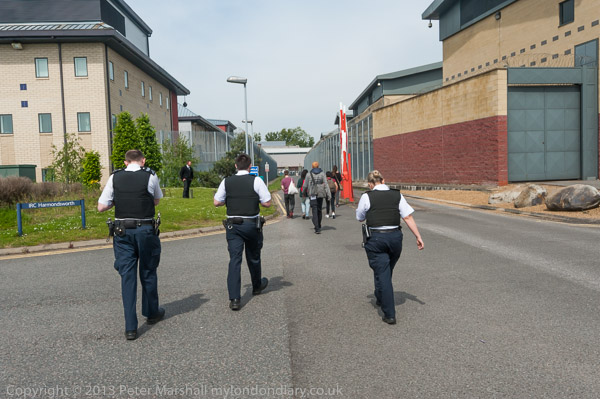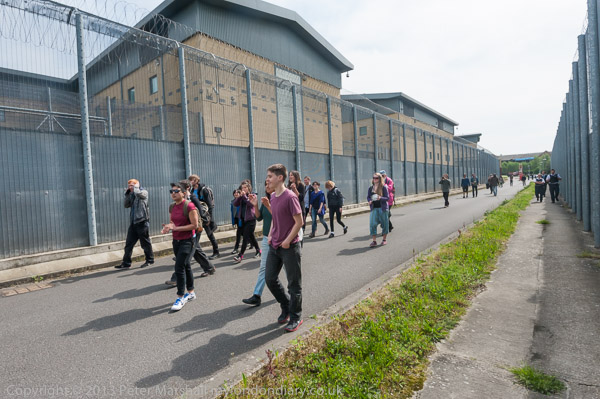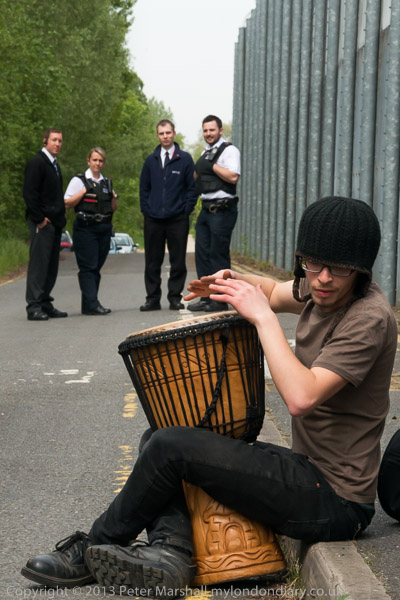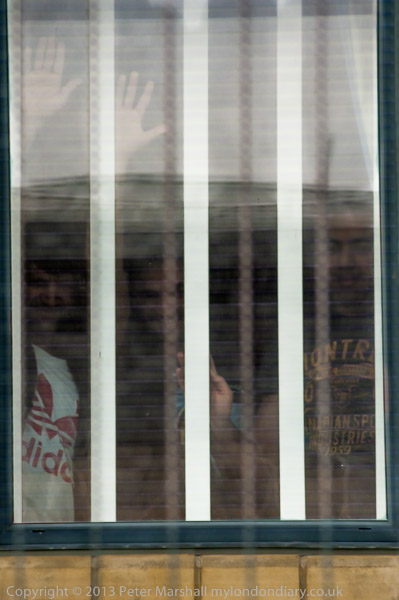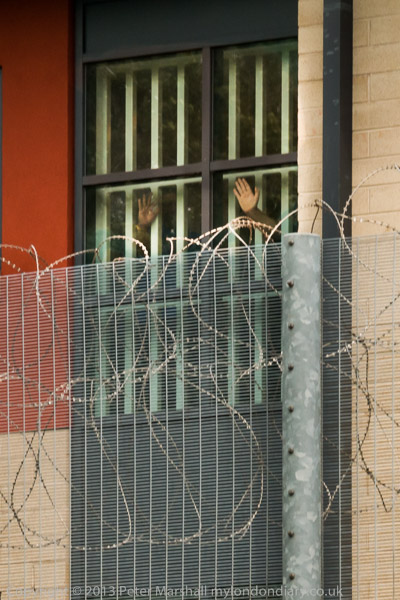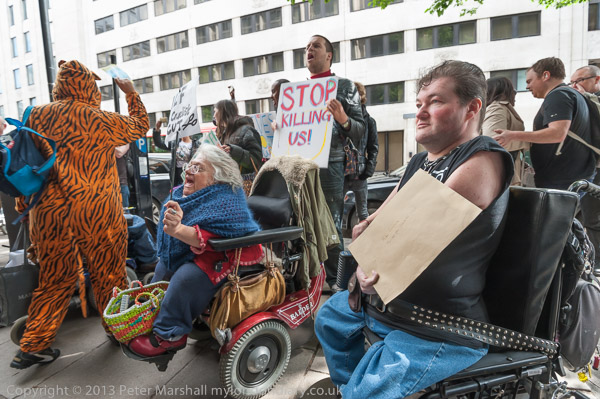
I was on my knees in the doorway – locked and guarded by security – of the Department of Work and Pensions, where protesters from disablement activists group DPAC had brought a letter for the Minister for Disabled People, Mike Penning. There wasn’t a great deal of room, even though I was the only photographer in front of the protesters, and I was using the 16-35mm, so was very close to the guy holding the envelope. Even at the time I was wishing they had written his name rather more clearly on the envelope, though I’ve brought it out a little in post-processing.
The lighting was tricky, with a little bright sunlight leaking into the scene in various areas, but all the significant subject matter in shade. Those near-white buildings opposite were very bright – and have been brought down quite a bit in Lightroom, where I’ve also brought up the shadows considerably. As taken the envelope was reflecting quite a lot of light and looked rather lighter than a manilla envelope should. But Nikon’s pattern metering worked well, though I doubt if this picture would have worked if I had not been using RAW.
Although I was only working at f5.6 (1/125, ISO 640) at 17mm there was considerable depth of field and the figures in the foreground – with the slight exception of the moving tiger – are pin sharp. Those at the back and the background are a little soft, just enough to add a little depth to the image, and the slowish shutter speed adds just a slight blur to those moving, particularly one hand of the figure holding the poster ‘Stop Killing Us’.
I’ve not bothered to correct the slight barrel distortion at 17mm, because I think it actually – if fairly subliminally – improves the image. You can see it in the lines of the background building and I think it has a slight effect of keeping the eye drawn in to the centre. It is actually more than you think – that tiger’s heel at bottom left just touches the edge of the frame after correction.
Of course I didn’t have time to think about everything when I was making the image – things were changing quite rapidly as usual, but I was certainly very conscious of the framing – and the images before and after this and its partner were both made at 16mm and from slightly different positions. This was the sixth of three seven frames where I was concentrating on the letter (the next differs only in having the tiger stationary a foot or so to the right), and after it I moved to the left as I wanted a clearer view of the placard with the scissors and the message ‘ILF Cruelist Cut’. But this picture stood out.

The next frame was good too, and appealed to me because the tiger holds in his left hand a grey bag with my name, MARSHALL, clearly visible – making this a pre-signed image. But it seemed just a little static compared to the above. Perhaps I should get one of those bags and take it to all protests!
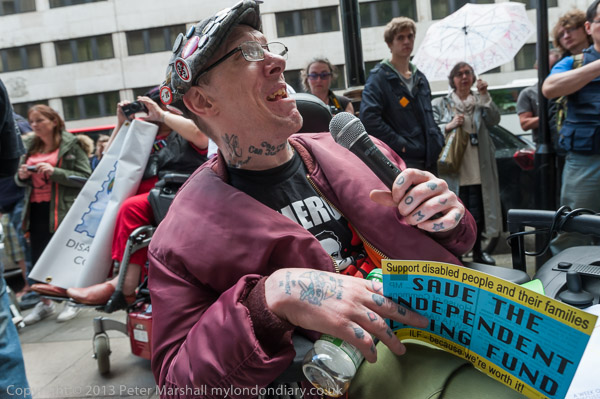
This was another picture I liked, and I had to look at the original RAW file to confirm that this was exactly how I framed it when making the picture. It’s another good example of why I like working close with the wide-angle – in this picture at 21mm. Here I had more time to work and took around 20 frames – this has the best framing and fortunately the best expression on the speaker’s face too. And it shows up those tattoos well.
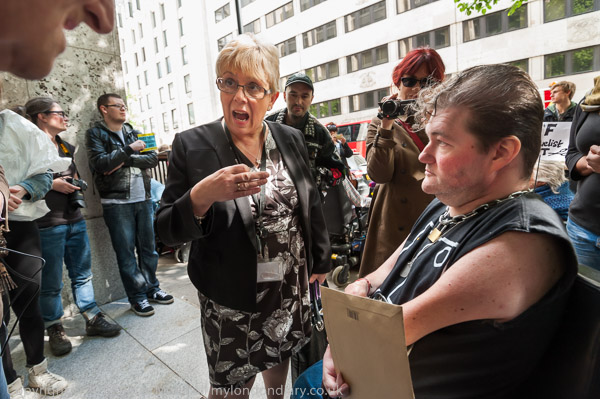
When it became clear security would not let the protesters in to deliver the letter, Mary Glindon, the Labour MP for North Tyneside took it in for them
Of course I don’t always get what I want, but at this protest I made a number of images I was pleased with. Although it was quite crowded on the pavement – and wheelchairs take up quite a lot of space, there were not very many other photographers present – and those present cooperated with each other. The DPAC protesters are always nice people to work with and of course they have great reason to protest, with disabled people having suffered the most from the government’s cuts. You can read more about their protest at Save Independent Living Fund where there are also quite a few more of my pictures from the event.
